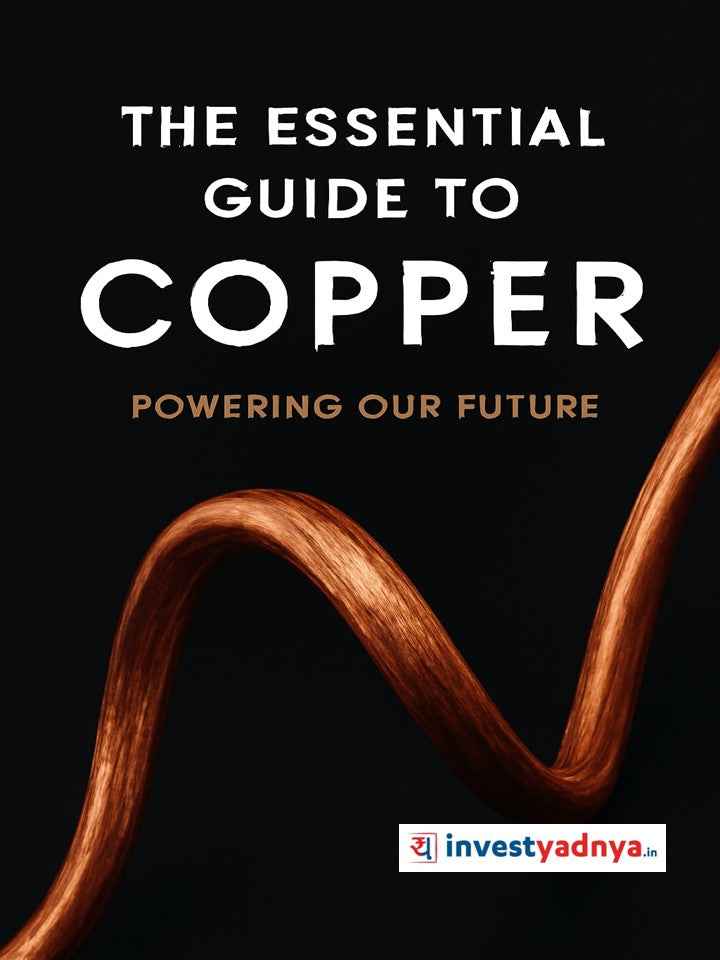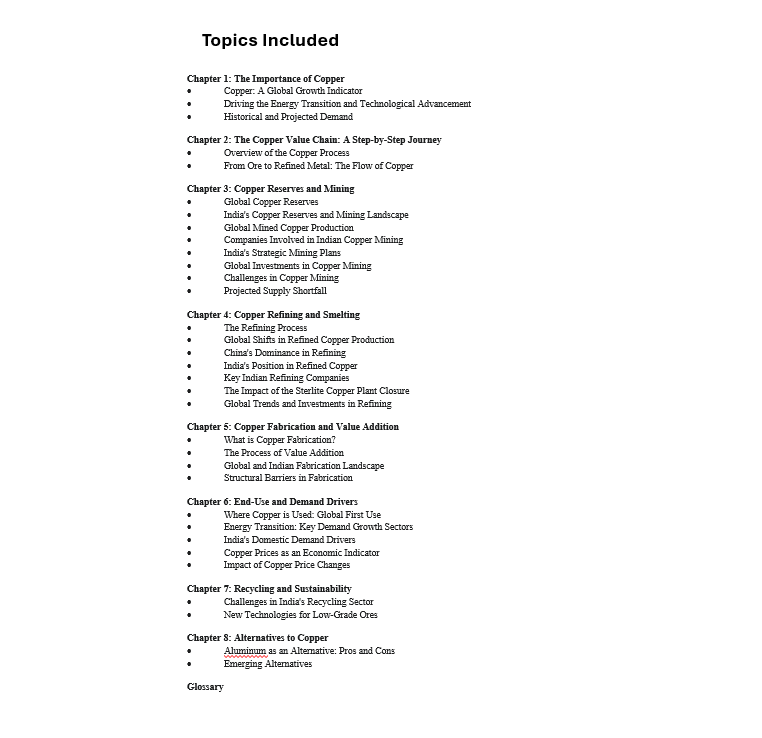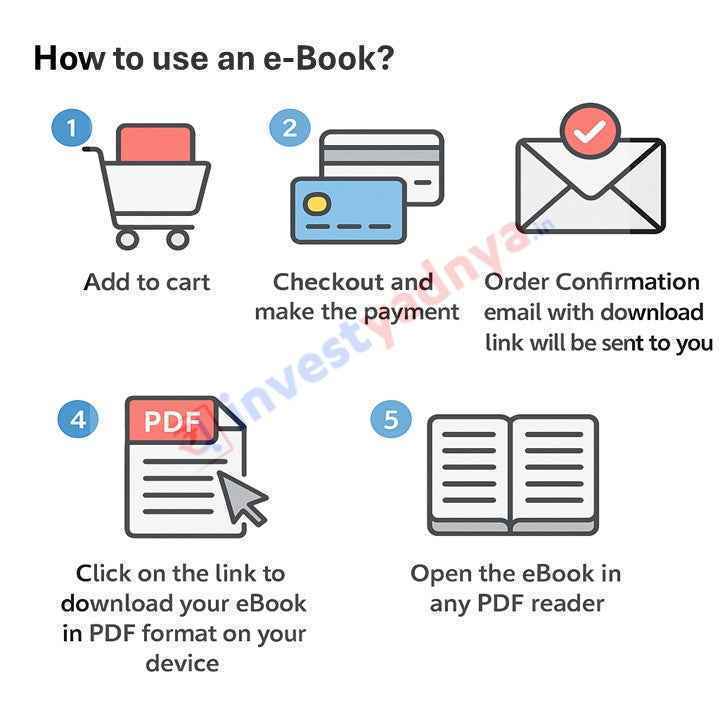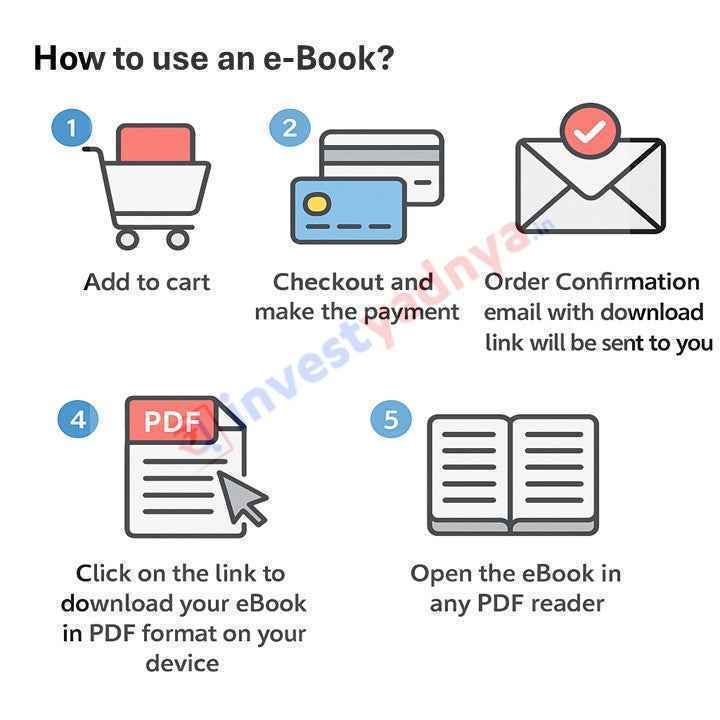Yadnya Investment Academy
The Unsung Metal: Understanding the Copper Value Chain
The Unsung Metal: Understanding the Copper Value Chain
Couldn't load pickup availability
The Unsung Metal: Understanding the Copper Value Chain
Welcome to an intriguing deep dive into the Copper Value Chain. This extensive guide unravels the complexity of copper's journey from its raw form to when it becomes a crucial component in various industries, including construction, electronics, and renewable energy.
Copper is not just another metal; it is an essential part of modern technology and infrastructure. Understanding its value chain is crucial for stakeholders, investors, and consumers alike. This product offers detailed insights into every step of the copper value chain, providing a comprehensive overview that empowers you to make informed decisions.
What is the Copper Value Chain?
The Copper Value Chain encompasses all the steps involved in the extraction, processing, and distribution of copper.
- Mining: The initial stage where copper ores are extracted from the Earth.
- Processing: Converting raw copper ores into pure metal and other derivatives.
- Refining: Ensuring the copper is of the highest quality for downstream applications.
- Distribution: Delivery of mined and refined copper to manufacturers worldwide.
Importance of the Copper Value Chain
From technology to renewable energy, the significance of a well-structured copper value chain cannot be overstated. It impacts numerous sectors across the globe.
- Renewable Energy: Copper is crucial for wind turbines and solar panels, making it integral to the renewable energy transition.
- Electronics: The high conductivity of copper makes it essential in manufacturing electronic devices—including smartphones, computers, and appliances.
- Construction: Copper's durability and resistance to corrosion ensure it remains a popular choice in plumbing, roofing, and electrical wiring.
- Automotive: Electric vehicles (EVs) rely heavily on copper for components such as batteries and electrical connections.
Stages of the Copper Value Chain
Understanding the Copper Value Chain means delving into its specific stages. Here’s a breakdown:
1. Mining
The journey starts with mining copper ores, primarily from large open-pit or underground mines. The extracted ores undergo initial processing to separate copper from waste material, a step that requires sophisticated technology.
2. Processing
Once mined, the ores are crushed and milled to liberate copper-bearing minerals. This involves flotation processes that result in copper concentrate, which is then taken to smelting facilities to further refine the metal.
3. Refining
Refining is a crucial stage where impurities are removed. The end product, electrolytic copper, reaches a level of purity suitable for various industrial applications.
4. Distribution
Finally, the refined copper is distributed to manufacturers who transform it into conductive components. These results have a far-reaching economic impact, influencing everything from resource availability to market prices.
Benefits of Understanding the Copper Value Chain
Grasping the Copper Value Chain equips you with vital knowledge beneficial for different stakeholders:
- Investors: Enhanced understanding leads to better investment decisions in mining and energy sectors.
- Manufacturers: Knowing the source and specifications of copper can optimize production processes.
- Consumers: Informed choices ensure you select high-quality products incorporating sustainable practices.
- Policy Makers: Insight into the copper industry's nuances can guide regulations and policies aimed at sustainable development.
Challenges in the Copper Value Chain
Despite its advantages, the copper value chain faces several challenges that must be understood:
- Environmental Impact: Mining and refining processes can lead to significant ecological disruption.
- Price Volatility: Copper markets can be affected by various factors, including global demand and geopolitical tensions.
- Supply Chain Disruptions: External factors like natural disasters and trade policies can hinder copper supply.
- Regulatory Compliance: Navigating the complex landscape of regulations requires constant vigilance and adaptability.
Future of the Copper Value Chain
Looking forward, the Copper Value Chain will likely evolve in response to emerging technologies and raw material demands, particularly in electric vehicles and renewable energy technologies. The focus on sustainable practices and innovations in mining and processing will shape the industry for years to come.
Investing in knowledge about the copper value chain is not just a smart move—it's essential. We invite you to explore this comprehensive guide and enrich your understanding of copper, its value, and its endless possibilities.
Ready to delve deeper into the world of copper? Purchase the product now and empower your decisions with expert insights!
Share






